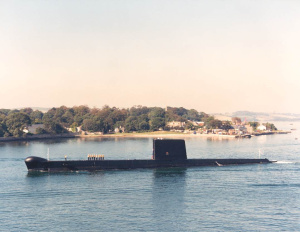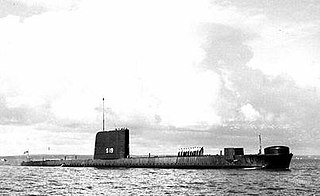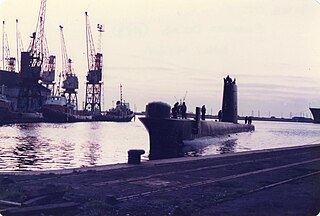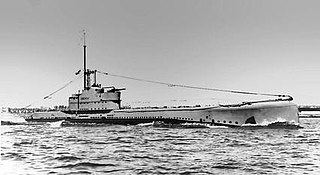
HMS Ocelot (S17) is an Oberon-class diesel-electric submarine which was operated by the Royal Navy.

HMS Onyx was an Oberon-class submarine of the Royal Navy.

HMS Onslaught was a British Oberon-class attack submarine operated by the Royal Navy.

HMS Oberon was the lead ship of the Oberon-class submarines, operated by the Royal Navy.

HMS Odin was a British Oberon-class submarine operated by the Royal Navy.

HMS Sealion (S07) was a Porpoise-class submarine.

HMS Opportune (S20) was an Oberon-class submarine of the Royal Navy.

HMS Otus was a Royal Navy Oberon-class submarine launched in 1962. She was decommissioned in the early 1990s and is now a museum ship in Germany.

HMAS Otway was an Oberon-class submarine of the Royal Australian Navy (RAN). One of the first four Oberon-class boats ordered for the RAN, Otway was built in Scotland during the mid-1960s, and commissioned into naval service in 1968. The submarine was decommissioned in 1994. The submarine's upper casing, fin, and stern are preserved at Holbrook, New South Wales.

HMS Olympus was an Oberon-class submarine that served in the Royal Navy, and later in the Canadian Forces as a submarine trainer.

HMS Osiris (S13) was an Oberon-class submarine that served in the Royal Navy.

HMS Opossum (S19) was an Oberon-class submarine in service with the Royal Navy from 1964 to 1993.

HMS Cachalot (S06) was a Porpoise-class submarine. Her keel was laid down on 1 August 1955 by Scotts Shipbuilding and Engineering Company at Greenock. She was launched on 11 December 1957, and commissioned on 1 September 1959.

HMS Oracle was an Oberon-class submarine of the Royal Navy.

HMS Otter (S15) was an Oberon-class submarine of the Royal Navy.

HMAS Oxley was an Oberon-class submarine of the Royal Australian Navy (RAN).

HMS H7 was a British H-class submarine built by the Canadian Vickers Co, Montreal, Quebec, Canada. She was laid down on 19 May 1915 and was commissioned in June 1915. HMS H7 was sold in 1921. It had a complement of twenty-two crew members, a length of 171 feet (52 m), and a surfaced range of 1,600 nautical miles at 10 knots.

HMS H32 was a H-class submarine constructed for the Royal Navy. The submarine entered service in 1919 and served in the Second World War, one of only seven of the class to do so. During Warship Week 1942 H32 was adopted by Lydney RDC (Gloucestershire). The submarine was sold for scrap in 1944.
HMS H26 was a British H class submarine built by Vickers Limited, Barrow-in-Furness, as part of the Batch 3 H class submarines. She was launched on 15 November 1917 and was commissioned on 29 December 1918. It had a complement of twenty-two crew members.

HMS Oberon was the prototype for the Odin-class submarine of the Royal Navy.



















